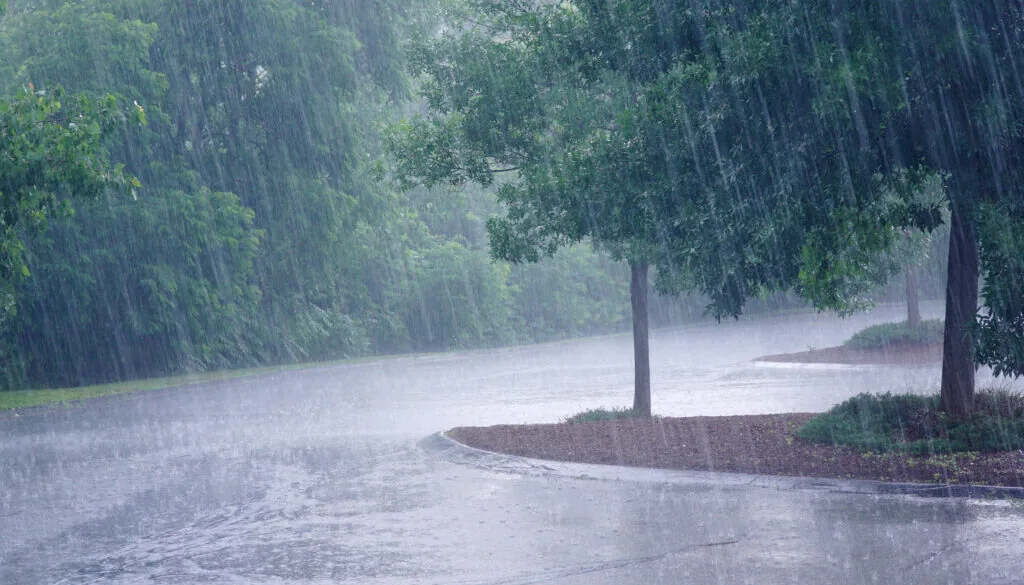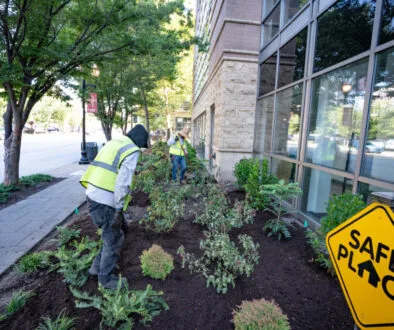Unseasonably Wet Spring in Louisville, Kentucky, and Plant Health
1. Record-Breaking Precipitation
Louisville, KY, has seen a wetter-than-average spring in 2025, building on a record-breaking start to the year for precipitation in Kentucky. This spring smashed historical rainfall records across Kentucky:
- April 2–6, 2025, brought a deluge of 6–12″ common, and 12–16″+ across much of western Kentucky; Marshall County reported an astonishing 15.6″ in just four days—a record-breaking event.
- The Kentucky Mesonet average for April hit 7.56″, vs. the long-term April norm of 4.73″, ranking it as the 4th-wettest April on record.
- From January to May, Kentucky received 32.5″ of rain, exceeding average by over 10″, making it the wettest start to a year ever recorded.
The interpolated maps (above) highlight the severity: vast swaths of the state, especially the west and central regions, have seen greatly increased precipitation, many exceeding 25″ so far.
2. Impacts on Plant Health
Positive effects
- Abundant rainfall means deep soil moisture, aiding seed germination and early plant growth.
- Temperatures early in spring were slightly warmer, promoting plant establishment.
Negative effects
- Waterlogged soils have inhibited fieldwork, delayed plantings, and suffocated root systems.
- Standing water has elevated disease risk (root rot, fungal issues).
- Soil erosion and nutrient leaching reduce fertility and undermine long-term soil health.
- Floodwaters and powerful storms, including tornado outbreaks, intensified stress on crops across the region.
3. How Herbicide & Pesticide Effectiveness Is Altered
Heavy rainfall disrupts chemical management:
Herbicides
- Pre-emergence products can be leached beyond the root zone or washed off, compromising weed control, and you may experience “breakthrough” sooner.
- Post-emergence herbicides struggle to absorb properly in saturated soils; weeds may be less active, reducing uptake.
- Weed species pressured by this cycle risk evolving herbicide resistance, particularly if control programs don’t adapt.
Pesticides
- Rain can wash away sprays, reducing efficacy and requiring reapplications.
- Flooded or stressed plants attract more pests like fungi, aphids, and slugs, creating persistent threats.
4. Best Management Recommendations
Wait for optimal conditions
- Hold off on herbicide applications until the soil begins drying at least several hours without rain, to ensure proper absorption.
Rotate chemistries & modes
- Use herbicides with different modes of action to prevent resistance.
- Integrate mechanical (tillage, hoeing) and organic mulching to control weeds.
Enhance soil structure
- Add organic matter to improve drainage and reduce compaction.
- Time lime or fertilizer applications based on soil tests.
Adopt integrated pest management (IPM)
- Scout fields frequently to catch disease/pest issues early.
- Consider biological controls or systemic treatments less prone to wash off.
Support drainage & irrigation improvements
- Install runoff dividers, tile drainage, or raised beds.
- Monitor moisture and adjust irrigation for even soil moisture (to avoid extremes).
5. What Our Team Will Be Doing
- Stay vigilant: With this much moisture, weeds grow aggressively—remove early, apply mulch or cardboard barriers to suppress.
- Wait for better weather: We don’t spray herbicides or pesticides right before or during rain.
- Use good irrigation scheduling practices: once the soil starts to dry, minimize fungal outbreaks and prevent chemical runoff.
6. Looking Ahead
Seasonal forecasts predict above-normal summer rainfall, especially in eastern Kentucky (30–40% chance). Paired with this spring’s rainfall, be prepared to continue adapting weed and pest strategies, especially for those intensive chemistries.
Interpreting the Maps & Charts
- The 4-image carousel shows:
- County-level April rainfall totals (Mesonet).
- Spring-wide precipitation anomalies.
- Regional rainfall departures.
- Flood-impact mapping (flash & river flooding).
- They visually emphasize the dramatic increase (25–30+ inches in spots) and highlight regional stress “hotspots.”
Maintaining Plant Health in Wet Conditions
This spring’s extreme wetness has provided both boons and barriers for Kentucky landscapes. The key to navigating it successfully? Strategic timing, chemical rotation, and IPM practices. As this continues into summer, staying adaptive will make the difference between thriving and being overwhelmed.
Share this post with your readers, and consider covering fall planning tips next, especially around soil health and drainage preparation.




